What Does a Plague Doctor Tattoo Mean?
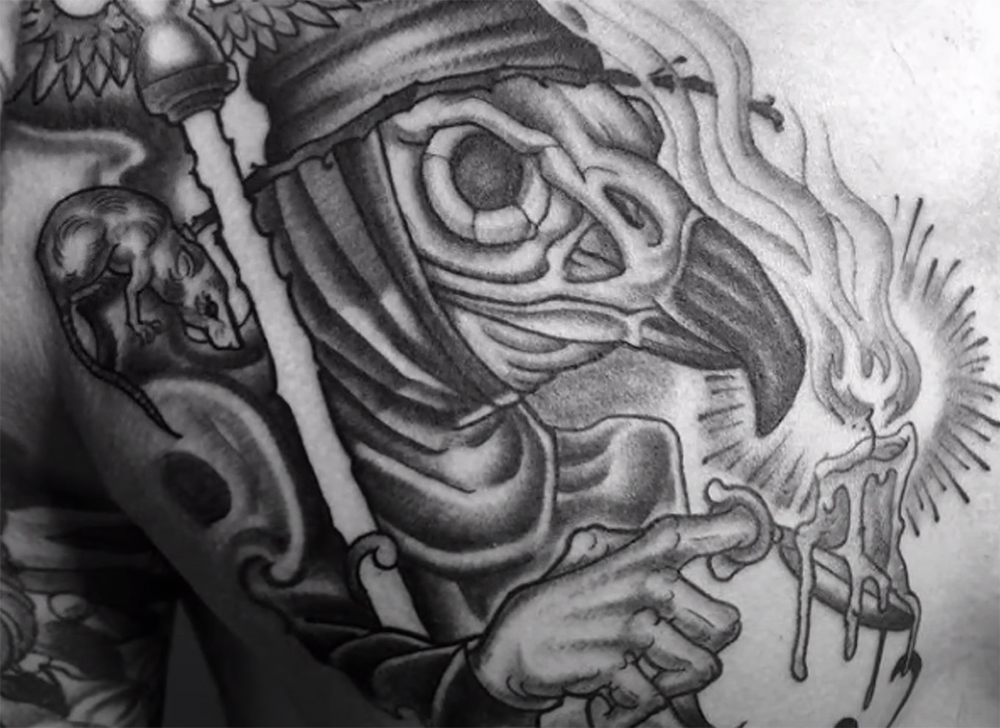
A Plague Doctor tattoo holds a multi-faceted meaning, draped in layers of historical and symbolic significance. At its core, it serves as a stark reminder of human mortality, a nod to a terrifying period in history when death was a daily reality. Moreover, it symbolizes resilience, representing those who courageously battled the plague, a nod to humanity’s enduring spirit in the face of adversity. Some pay homage to the medical profession with this tattoo, honoring the timeless commitment of healers who risk their own lives to save others. Lastly, the Plague Doctor also symbolizes mystery and the unknown, much like the enigmatic diseases they battled. Each interpretation is deeply personal, reflecting the wearer’s unique perspective and relationship with the symbol.[1]
Few Possible Interpretations Of A Plague Doctor Tattoo
Resilience and Survival
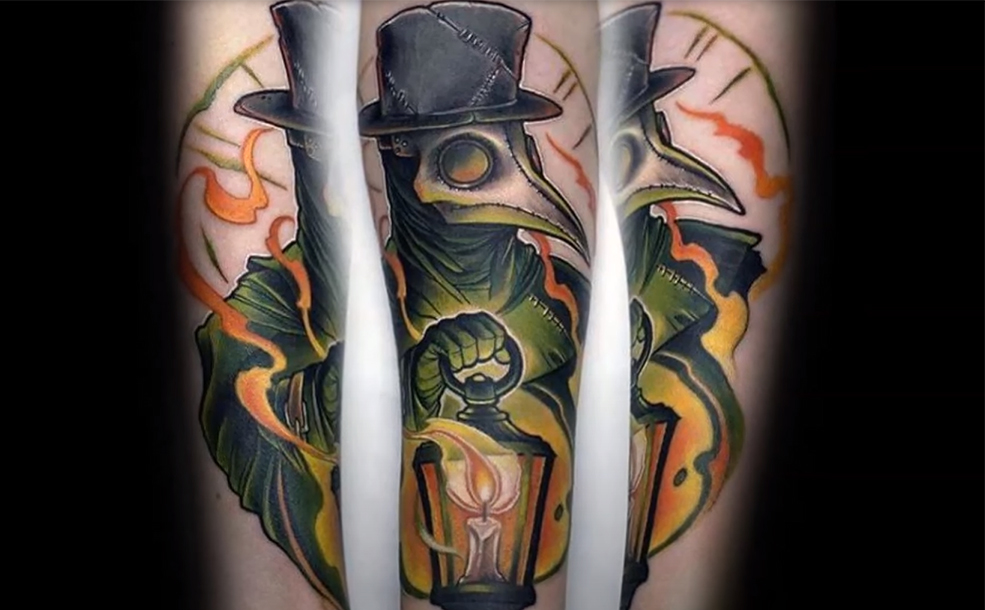
Embracing the Dark or Mysterious
The Plague Doctor, with its distinct and eerie beaked mask, is undeniably a symbol of the dark and mysterious. It is emblematic of a time shrouded in fear, uncertainty, and death. For some, this tattoo represents an embrace of these darker aspects of life and history. It may symbolize a fascination with the macabre, a curiosity about the unknown, or a desire to confront and understand the darker facets of human existence. The Plague Doctor tattoo, in this context, can be a powerful statement of one’s courage to face the fearsome and mysterious elements of life, or it could represent an acceptance of life’s inherent uncertainties and inevitable hardships. The wearer may see this tattoo as a personal testament to their ability to weather life’s storms, no matter how daunting or mysterious they may be.
Healing and Compassion
The Plague Doctor is not merely an ominous figure of death – it’s also a symbol of healing and compassion. These doctors, despite the risks to their own lives, selflessly took up the task of treating the infected and offering comfort in a time of rampant fear and misery. For some, a Plague Doctor tattoo is a tribute to this spirit of compassion and the healing profession. It acknowledges the valor and dedication of those who place themselves in danger for the welfare of others. This tattoo might be particularly meaningful to individuals in the medical field or those who have experienced significant health challenges. It serves as a testament to the healing power of compassion and the strength of the human spirit, even in the face of devastating illness or adversity.
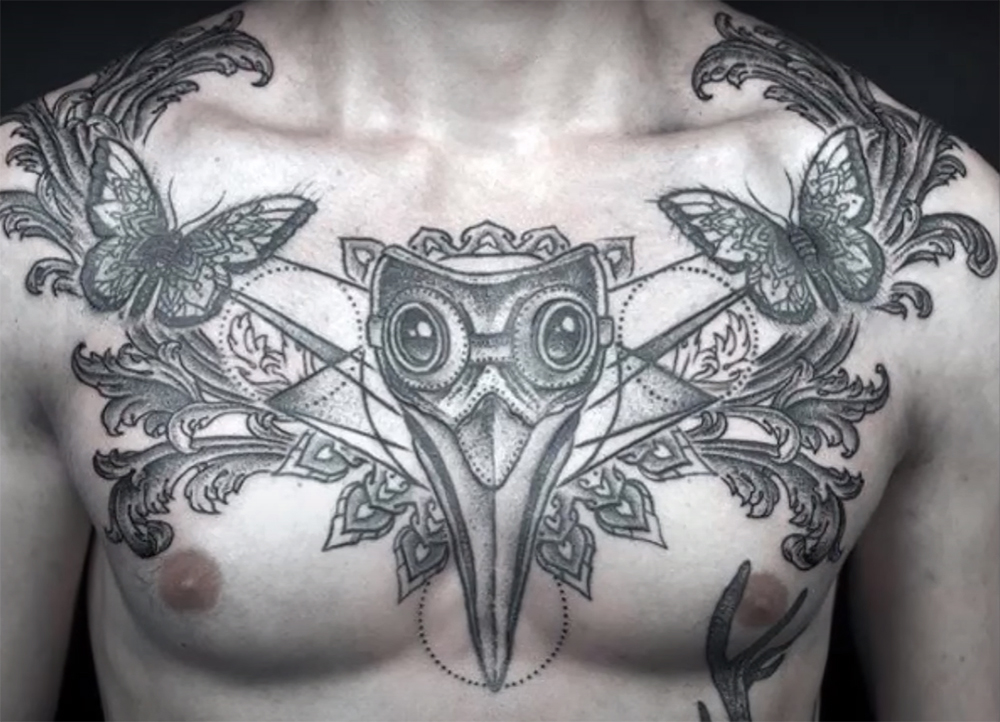
Embracing Individuality
The Plague Doctor tattoo also signifies embracing one’s individuality and highlighting the uniqueness of one’s journey. With its multifaceted meanings and interpretations, it serves as an acknowledgment of the wearer’s singular path, and their distinctive understanding of life’s complexities. It is a bold declaration of one’s uniqueness, an emblem of a person who is not afraid to stand apart from the crowd and embrace their individual perspectives. Whether it signifies a respect for the medical profession, an acceptance of mortality, or an appreciation for life’s mysteries, the tattoo ultimately reflects the wearer’s unique worldview. In this way, the Plague Doctor tattoo can be seen as a symbol of individuality, personal strength, and the courage to embrace one’s unique journey, no matter the hurdles encountered along the way.
Mystery and Secrecy
The image of the Plague Doctor, enshrouded in a long, dark cloak and a mask with beak-like protrusion, exudes an aura of mystery and secrecy. This can represent the wearer’s intrigue towards the unknown or possibly their own secretive nature. It could also symbolize the mysteries of life and the universe, acknowledging that not all questions have answers. The Plague Doctor tattoo, in this context, can serve as a reminder of the intriguing enigmas that life presents us with, and the secrecy that often surrounds many aspects of our existence. It’s a nod to those who embrace ambiguity, understand the value of secrets, or simply find beauty in the mysterious and unexplained aspects of life.[1],[2]
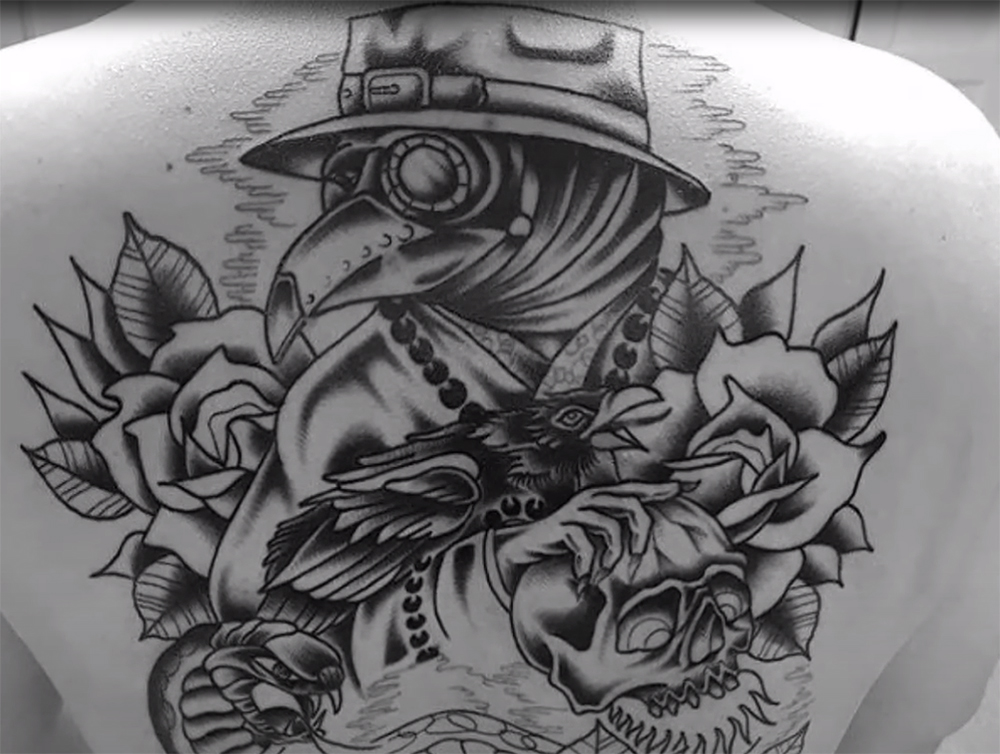
About the Plague Doctor
This haunting image of the Plague Doctor has transcended time, etching its indelible mark on the annals of history. Its symbolism has endured, evolving and adapting over the centuries, acquiring new layers of meaning. Today, it stands as a profound symbol of resilience, healing, and the acceptance of mortality, serving as a reminder of our shared vulnerability and the ephemeral nature of life itself. Moreover, it represents an embodiment of the human spirit’s capacity to confront the unknown with unwavering strength, compassion, and an unwavering will to survive, even in the face of unimaginable adversity.

Despite its origins in a time of immense suffering and death, the Plague Doctor has emerged as a powerful and enduring emblem of hope, resilience, and the triumph of the human spirit. Its legacy serves as a testament to the boundless courage, selflessness, and compassion that defines our shared humanity, inspiring us to confront challenges head-on and emerge stronger than ever before.[2]
FAQ
What does a plague doctor tattoo mean?
A Plague Doctor tattoo is not only rich in symbolism but also holds a plethora of meanings that can vary based on the wearer’s personal interpretations and experiences. Rooted in history, it serves as a powerful symbol of resilience, survival, and human tenacity in the face of extreme adversity, reminiscent of the Bubonic Plague era when these daring doctors risked their lives to aid the sick. However, its significance goes beyond that.
The Plague Doctor tattoo also represents an embrace of the dark and mysterious aspects of life, embodying the fear, uncertainty, and death prevalent during the Plague era. It serves as a reminder of the fragility of life, prompting reflection on the transient nature of our existence. Yet, amidst this darkness, it encapsulates the spirit of healing and compassion, paying homage to the selfless dedication of those in the healing profession who tirelessly cared for the afflicted.
Moreover, the Plague Doctor tattoo signifies individuality and the courage to follow one’s unique journey, acknowledging one’s distinctive understanding of life’s complexities. It speaks to the wearer’s deep introspection and their willingness to confront life’s challenges head-on, seeking wisdom and growth through their own experiences. By wearing this tattoo, individuals embrace their own narrative and celebrate their ability to navigate life’s winding paths.
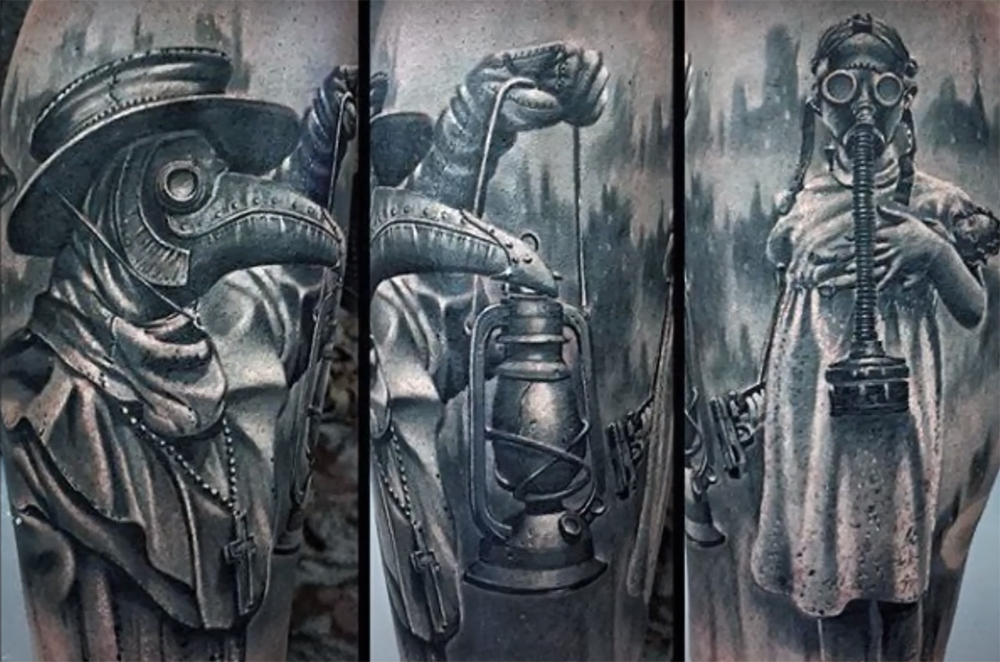
Furthermore, the image of the Plague Doctor, with its eerie mask and cloak, signifies mystery and secrecy, evoking a sense of intrigue and fascination with the unknown. It symbolizes an acceptance of life’s enigmatic aspects and an appreciation for the beauty found within the shadows. The tattoo speaks to a curiosity that drives individuals to explore the depths of knowledge, always seeking to unravel the mysteries that surround us.
In conclusion, a Plague Doctor tattoo can hold different meanings to different people, but ultimately, it serves as a profound symbol of human strength, compassion, and the enduring will to survive. It is a testament to our ability to overcome adversity, embrace our individuality, and find beauty even in the darkest of times.
What do plague doctors symbolize?
The Plague Doctors symbolize multiple facets of human existence, with each aspect carrying profound implications. Primarily, they serve as a poignant representation of resilience and survival, standing as a testament to the indomitable spirit of humanity. As medical practitioners during the harrowing era of the Bubonic Plague, they fearlessly ventured into the heart of the epidemic, risking their own lives to provide care and solace to the afflicted. In their unwavering courage and selflessness, they embody the essence of human fortitude in the face of extreme adversity.
Moreover, the Plague Doctors signify healing and compassion, paying homage to the pivotal role of those in the medical profession who dedicate themselves tirelessly to the welfare of others. Their presence serves as a constant reminder of the profound impact that empathy and care can have on the lives of those in need. They stand as a beacon of hope and a source of comfort in times of distress.
On a more metaphysical level, the Plague Doctor represents the acceptance of life’s darker and mysterious aspects, embracing the inherent uncertainty and fragility of our existence. Their eerie and distinctive attire further accentuates the enigmatic aura surrounding them, evoking a sense of intrigue and fascination. In their haunting appearance, they embody the enigma of mortality and the unknown, urging us to contemplate the transient nature of life and the mysteries that lie beyond our comprehension.
Last but not least, the Plague Doctors symbolize individuality, reflecting the unique journey that each person undertakes throughout their lifetime. In a world that often seeks conformity, they stand as a reminder of the beauty and strength found in embracing one’s true self. Their presence serves as a testament to the power of individuality and the celebration of diversity in all its forms.
In essence, the Plague Doctors personify the very essence of human strength, compassion, mystery, individuality, and the unwavering will to survive. They remind us of the indomitable spirit that resides within each of us, urging us to face life’s trials with courage and resilience. Through their haunting image, they have become an enduring symbol of hope, reminding us that even in the darkest of times, the human spirit can prevail.
Are plague doctors the symbol of death?
The Plague Doctor, with its ominous garb and eerie mask, is frequently associated with death due to its historical role during the time of the Bubonic Plague, a period marked by widespread mortality. However, to categorize the Plague Doctor solely as a symbol of death would oversimplify its rich symbolism. While the image undeniably embodies the fearful and deadly realities of the Plague era, it also stands as a testament to human resilience, compassion, and the relentless will to heal and survive.
The Plague Doctor’s attire, characterized by the long black cloak and the iconic beak-like mask, was not merely a uniform for protection against the contagious disease. The mask itself had a practical purpose, serving as a rudimentary filter filled with herbs and spices to ward off the foul stench and miasma believed to carry the disease. Beyond its functional significance, the mask took on a symbolic meaning, representing the dual nature of the Plague Doctor’s role. It simultaneously concealed the doctor’s identity, creating an air of mystery and anonymity, while also serving as a sign of authority and expertise.
Moreover, the Plague Doctor figure represents the tireless efforts of healthcare workers who risked their lives to provide care during the devastating plague. Despite the overwhelming death toll and the constant presence of mortality, these brave individuals exhibited unwavering dedication and selflessness. They embodied the strength of humanity in the face of mortal peril and demonstrated the power of compassion and healing.
Thus, while death is certainly a part of the Plague Doctor’s symbolism, it’s not the whole story. This enigmatic figure encompasses the multifaceted nature of life’s duality. It encapsulates both the inevitability of death and the enduring spirit of life. In its haunting image, the Plague Doctor serves as a poignant reminder of the fragility of existence and the resilience of the human spirit.
What is the plague doctor holding?
The Plague Doctor is often depicted in historical illustrations and descriptions as holding a cane or a staff. This item, while appearing as a mere accessory, held significant practical value during the time of the Bubonic Plague. Beyond its aesthetic appeal, the cane or staff served a crucial purpose in the doctor’s costume, enabling them to carry out their duties while minimizing the risk of infection.
The cane or staff allowed the Plague Doctor to examine patients from a safe distance, a technique that was paramount in the face of such a highly contagious disease. By using the cane or staff, the doctor could point to areas of concern on the patient’s body without the need for direct physical contact. This method not only protected the doctor from potential infection but also ensured the safety of the patient by minimizing the risk of transmission.
In addition to its practical function, the cane or staff held symbolic significance within the context of the Plague Doctor’s role. It represented the doctor’s dual identity as both a healer and a guide during a dark and challenging period in history. The staff, being a universal symbol of authority and guidance, underscored the respect and trust placed in these doctors during the crisis. It served as a visual reminder of their pivotal role in the struggle against the deadly disease, symbolizing their unwavering commitment to saving lives and providing comfort to those in need.
Even today, the image of the Plague Doctor holding the staff or cane serves as a poignant reminder of this historical period and the extraordinary efforts of these individuals. It stands as a testament to their selflessness and courage, as they risked their own lives to care for others. The cane or staff, in its historical and symbolic context, continues to evoke a sense of admiration for these brave souls who dedicated themselves to the service of humanity during one of the darkest chapters in history.
How many plague doctors died?
Historical records regarding the exact number of Plague Doctors who died during the Bubonic Plague are scarce and not clearly defined. However, it is well-documented that these medical practitioners, driven by their dedication to save lives, valiantly risked their own in the face of the deadly disease they were combating. Working tirelessly in the heart of the infection, their unwavering commitment brought them into direct contact with countless afflicted patients, exponentially increasing their chances of contracting the plague.
Despite donning protective clothing and masks filled with aromatic herbs, these measures, although innovative for their time, were not always successful in preventing infection. The limited understanding of disease transmission at that time hindered their efforts to safeguard themselves completely. Thus, while a specific death toll of Plague Doctors remains elusive, it is undeniable that many of these selfless individuals paid the ultimate price in their unwavering service to humanity during one of history’s most devastating pandemics.
Their sacrifice stands as a testament to the bravery and dedication of these remarkable individuals, who put the well-being of others above their own safety. Their legacy serves as a reminder of the immense challenges faced by medical professionals throughout history and the profound impact they have made in shaping our understanding of infectious diseases.
What is the plague doctor mask called?
The mask worn by the Plague Doctor, also known as the ‘beak mask’, derived its name from its distinctive beak-like shape. This unique design was not simply a theatrical accessory, but rather served a practical purpose during the devastating plague outbreaks. The beak-like projection of the mask was ingeniously filled with a concoction of aromatic herbs and spices, meticulously chosen for their believed purifying properties. These fragrant mixtures were thought to counteract the noxious “bad air” that was widely believed to be the source of the deadly plague.
The intricate craftsmanship, the aromatic blend of herbs, and the haunting silhouette of the beak mask all serve as poignant reminders of the historic struggle against infectious diseases and the constant pursuit of knowledge in the face of adversity.
Useful Video: Plague Doctor Tattoo | Neo Traditional Tattoo Timelapse
Conclusion
In conclusion, the symbolism and meaning behind the Plague Doctor tattoo are incredibly multifaceted, representing not only resilience, survival, and healing, but also a profound confrontation with the unknown aspects of life and death. This intricate emblem, while historically associated with the shadows of death, transcends its dark origins to celebrate the indomitable spirit of humanity. It serves as a powerful reminder of our collective tenacity, courage, and compassion even in the most dire circumstances.
The image of the Plague Doctor, with its distinctive beak mask, cloak, and staff, is not simply a chilling reminder of one of the darkest chapters in human history. It is a testament to our enduring spirit and an homage to the selfless individuals who risked everything in the service of others. Beyond its historical significance, a Plague Doctor tattoo serves as a profound symbol of our shared human experience. It encapsulates our deepest fears, our most arduous struggles, and our unwavering will to survive.
By adding this intricate emblem to our bodies, we carry with us a constant reminder of our resilience and the strength that lies within us. It serves as a visual representation of our ability to confront the unknown, face our fears head-on, and emerge stronger on the other side. A Plague Doctor tattoo is not just an inked image; it is a profound reflection of our individual and collective journeys, reminding us of the depths we have traversed and the heights we are capable of reaching.
In essence, the Plague Doctor tattoo is a timeless symbol that resonates with people from all walks of life. It speaks to our shared humanity, reminding us of our capacity to overcome adversity and find light even in the darkest of times. It is a testament to the enduring power of the human spirit and a tribute to the countless souls who have faced unimaginable challenges throughout history.
References:
- https://tattmag.com/plague-doctor-tattoo/
- https://www.tattooseo.com/plague-doctor-tattoo-meaning/






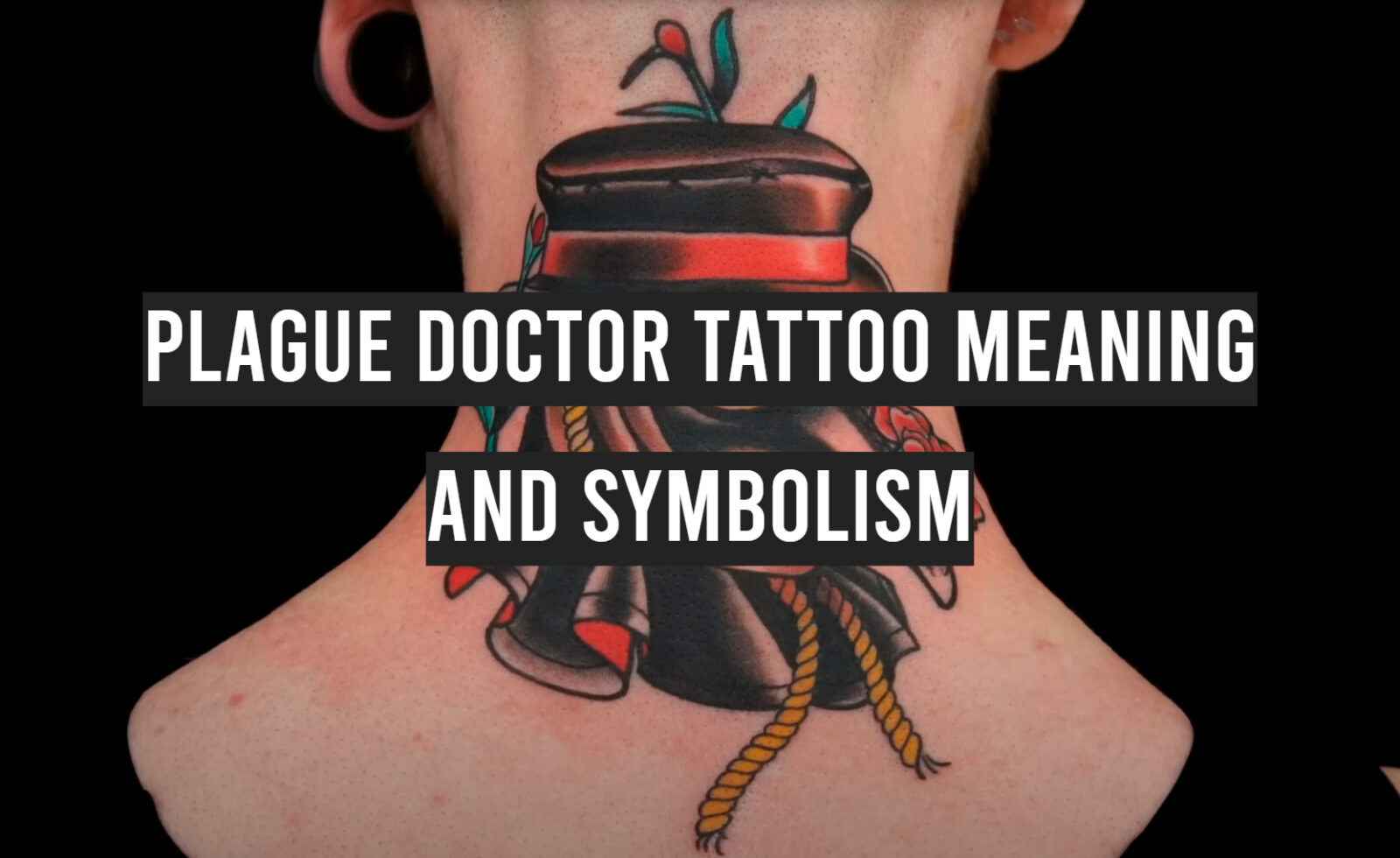
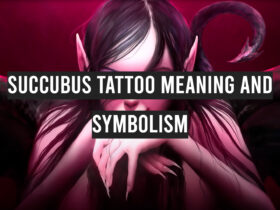


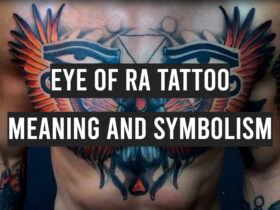
Leave a Review